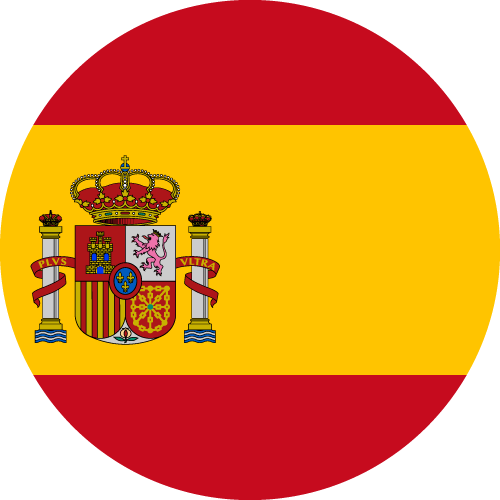Fused Deposition Modeling (FDM) printing has already become a relatively mature technology. There is already a wealth of information available on how to choose a good printer, but there's less about the material. The choice of printing materials is equally crucial.
A wide variety of filaments, such as PLA, ABS, TPU, and PETG, are already present on the market, and you might easily get lost among them. Today, we primarily discuss how to choose the right 3D printer PLA filaments. We've put together a buying guide specifically for Anycubic 3D printer filaments, and hope that this can help you find the best PLA filament, and fully enjoy your printing experience.
PLA Filament Recommended List:
- Standard Type - 1.75mm PLA 3D Printer Filament
- Visual Type - 1.75mm Silk PLA 3D Printer Filament
- Visual Type - 1.75mm Matte PLA 3D Printer Filament
- Functional Type - 1.75mm High Speed PLA 3D Printer Filament
What is PLA Filament?

Polylactic Acid (PLA) filament is currently the most popular material in 3D printing. PLA is often made from natural raw materials, such as corn, sugarcane, and other plants, which are fermented into lactic acid and then processed into PLA plastic. In FDM 3D printing technology, PLA filaments are typically produced as a spool of filament. This design makes it easier to feed the filament into the printer's extruder, where the hotend heats and melts the filament before it's extruded onto the heated bed. After cooling, the filament solidifies into a 3D printed object.
The Pros and Cons of PLA Filament

(3D Prints are built from Anycubic PLA Filaments.)
Unlike liquid UV resin used for SLA printing, PLA is non-toxic and biodegradable, and it is an entirely environmentally friendly material. Due to its low melting point, PLA plastic is easy to print, boasting a higher success rate than other high-temperature materials. This is a material that is extremely suitable for beginners.
Moreover, models printed with PLA show a smooth surface, making it an excellent choice for creating architectural mock-ups, aesthetic art projects, and casting molds. However, PLA also has its drawbacks: its sensitivity to temperature due to the low melting point and its mechanical properties are poor, compared to other materials such as ABS or PETG.
| PROS: | CONS: |
|---|---|
|
|
|
Anycubic PLA Filaments Family
Anycubic is a 3D printer manufacturer that offers affordable and reliable printers and materials. Their filaments have a diameter of 1.75mm, widely compatible with most desktop-level 3D printers available in the market. Sold in 1-kilogram spools, it comes in various colors for you to choose from. To meet the diverse needs of users, they currently offer three types of PLA: standard type, visual type, and functional type. You can delve deeper to learn more about each of these options.
1. Standard Type - 1.75mm PLA 3D Printer Filament

Anycubic 1.75mm PLA 3D Printer Filament is the ideal choice for beginners. It typically comes with a vacuum-sealed package to prevent moisture absorption and degradation. Additionally, with a small tolerance of ±0.02mm, it's neatly wound with no tangles, ensuring a smooth printing experience. With up to 9 color options, you can use different colors for your daily printing, enabling you to create unique and vibrant creations.
2. Visual Type - 1.75mm Silk PLA 3D Printer Filament

If you're tired of basic PLA filaments, try printing with Anycubic 1.75mm Silk PLA. Objects printed with Silk PLA exhibit a glossy and shiny surface, significantly improving the visual experience. For post-processing, this silky surface is particularly easy to sand. As for the color options, they are all special and textured, including rainbow, silver, light gold, and metal blue. These options are the best for makers to bring their artistic concepts to life.
3. Visual Type - 1.75mm Matte PLA 3D Printer Filament

The other visual type has a completely distinct texture compared to silk PLA. The 1.75mm Matte PLA features an elegant frosted texture. It's due to this matte surface finish that the layer lines of the printed object can effectively hide. There are three classic colors available for selection: yellow, black, and white.
4. Functional Type - 1.75mm High Speed PLA 3D Printer Filament

The 1.75mm High-Speed PLA Filament is tailored for fast printing. How to achieve fast printing has become one of the current hot topics. Anycubic's Kobra 2 Series is all affordable high-speed printers, especially Anycubic Kobra 2 Pro, the Speed ACE. This printer can reach speeds of up to 500mm/s when printing a standard Benchy when using this high-speed material. It completes the Benchy print and takes just under 15 minutes. To obtain fast 3D printing, the printer requires materials with a high flow rate, so the low melting point and strong fluidity of this high-speed PLA filament make it an optimal choice.













